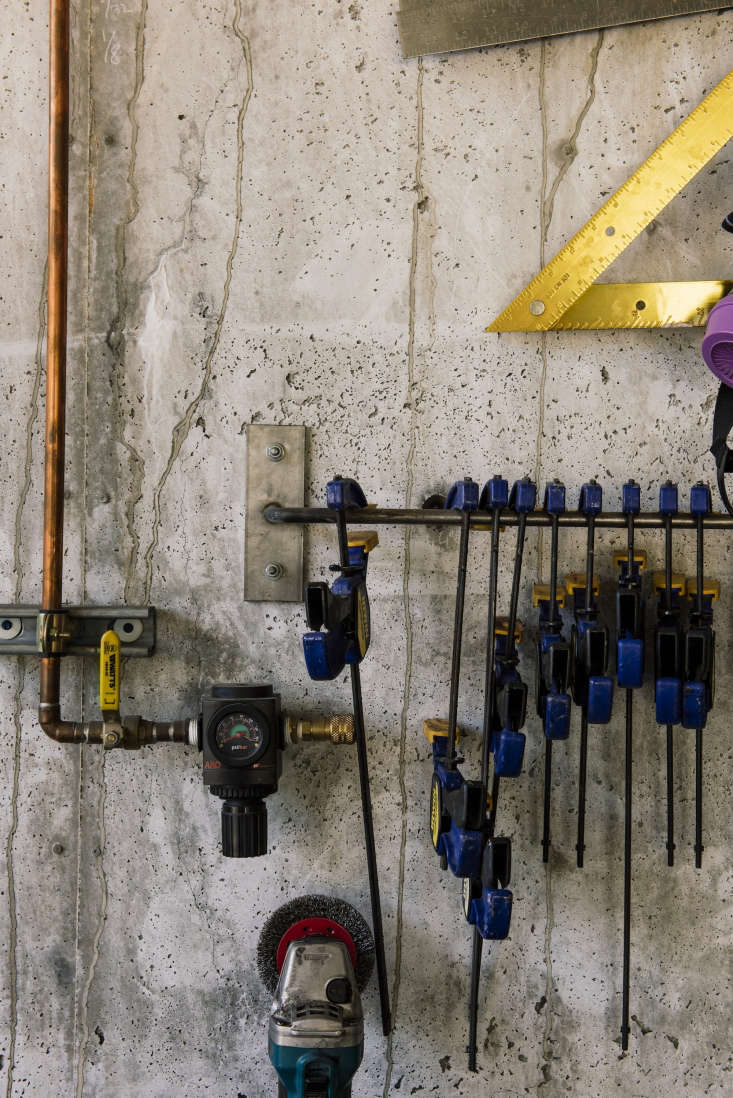A derelict, 19th-century wooden barn is a brilliant place for an artist’s studio. If you add a little love, and a lot of retrofitting, as architects Maria Berman and Brad Horn did for a client who is an artist in New York’s Hudson Valley, an empty barn can become a workspace, wood shop, and art library in no time. (See the Art Studio here.)
But no matter how much the barn has been modernized, it’s no place for welding—a step required for some of the artist’s larger pieces. So when Berman Horn Studio (members of the Gardenista Architect/Designer Directory) was asked to add a separate, indestructible space for welding, they knew immediately how they would make a new concrete workshop complement a 19th-century vernacular: They simply poured concrete walls and a roof in the shape of an old barn.
Photography by Rush Jagoe, courtesy of Berman Horn Studio.

Pouring the concrete evenly required five individual holes—the small “necks” left over from that process are visible on the studio’s roof line. “Typically, they would be removed,” said architect Maria Berman, “but we decided to leave them both as a remnant of the process of making the building and because they reminded us of the chimneys they resemble. They’re also somehow really cute, which is not what one typically associates with a concrete building.”

Deciduous Boston ivy, was chosen for “the seasonal diversity of seeing the ivy green out, grow berries, turn colors, and finally shed its leaves in the winter.”
The architects designed a narrow planting bed, a pocket of soil that borders the studio, to give the ivy a spot to take root. The vine is a strong grower, notes Berman, and needs to be trimmed around doors and windows. (When these photos were taken, the ivy had been growing for about two years.)










For more petite enclosures, see:
- Modern Family: A Tiny Garden Getaway in the Netherlands
- Outbuilding of the Week: A Cookhouse at Kurtwood Farms on Vashon Island
- Outbuilding of the Week: Garage as Lantern in the German Countryside
Finally, get more ideas on how to plant, grow, and care for various vines and climbers with our Vines & Climbers: A Field Guide.
Additionally, get more ideas on how to successfully plant, grow, and care for ivy with our Ivy: A Field Guide.
Finally, get more ideas on how to plant, grow, and care for various ground cover plants with our Ground Covers: A Field Guide.








Have a Question or Comment About This Post?
Join the conversation